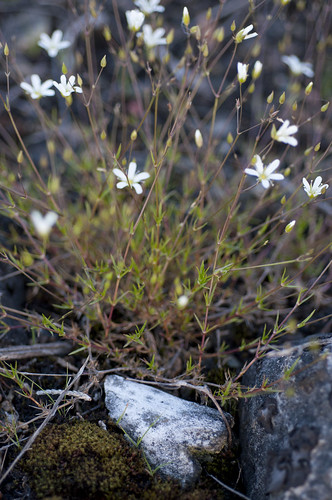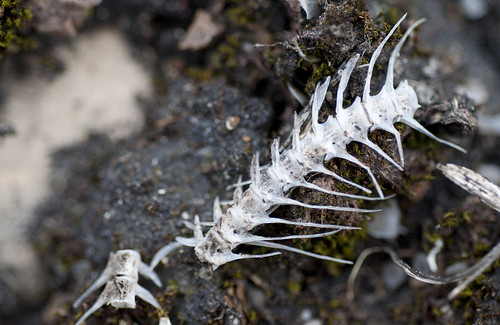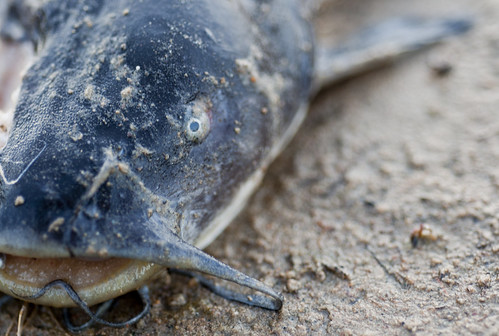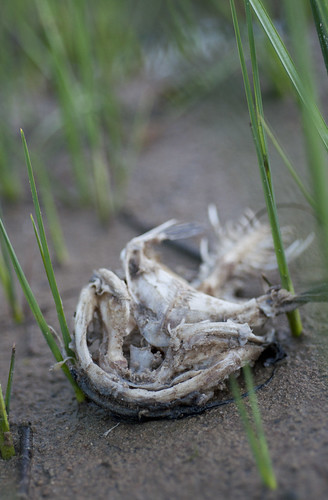As is the case with any open grassland, there is very little shade to be had. The sun beats down upon the stunted plants and dry soil; materials, no matter how sturdy, become weathered at an advanced rate. I happened upon several deer bones while exploring the Maxton Plains — they were bleached and brittle from spending years in the sun.
Though we were a few miles from the lakeshore, fish bones were also found on the plains. How they got there is anyone's guess.
On the final night of our stay, we took a walk down to the beach. The sun was setting and the lake was restless — a warm wind was moving through the bay. Strewn on the sand, amongst crayfish carapaces and aquatic snails, were the remains of two different bullheads. Both had been thoroughly pecked at by the gulls.
As the sky grew darker, the gray treefrogs began their evening chorus, singing from the towering cedars. Dragonflies hawked the newly-emerging mayflies, and a turkey vulture made one final circle over the beach, its silhouette passing the glowing half-moon.










No comments:
Post a Comment